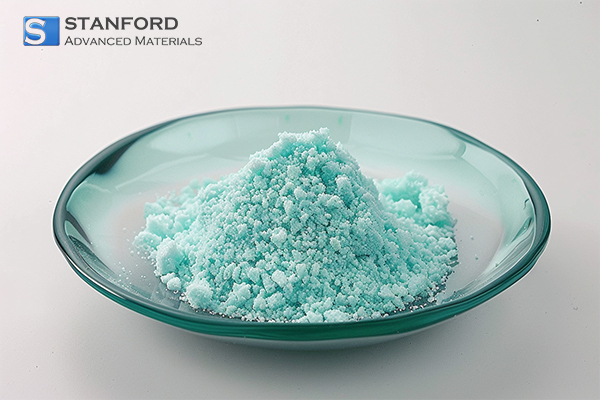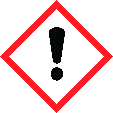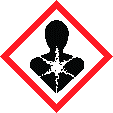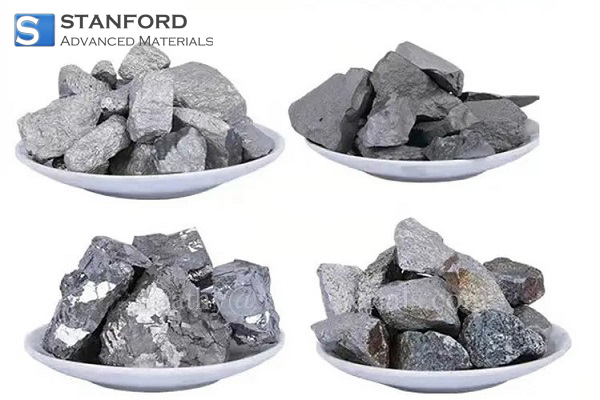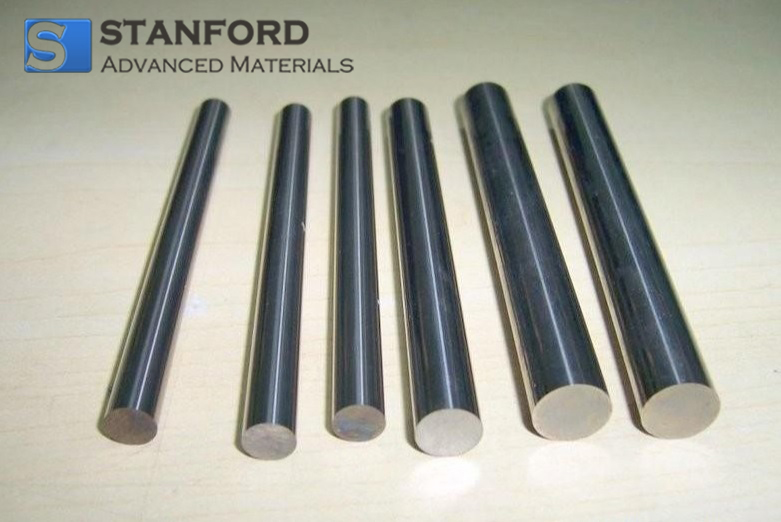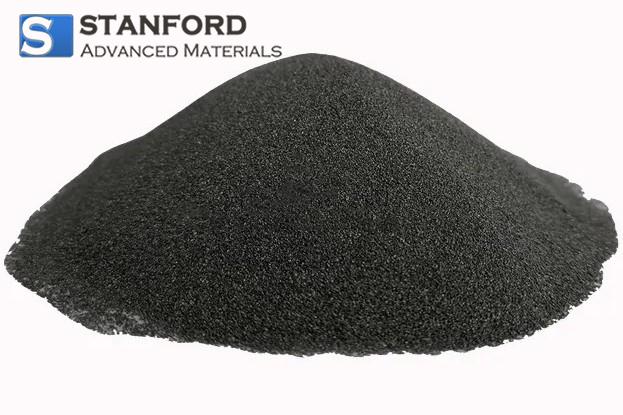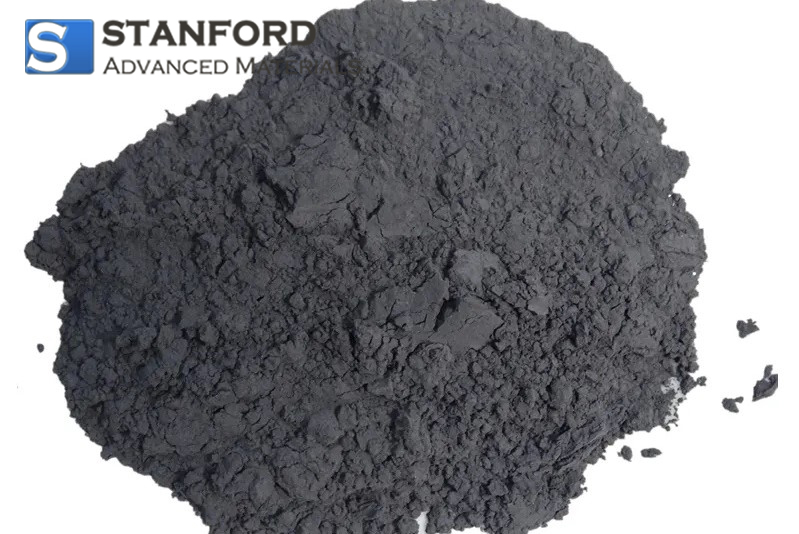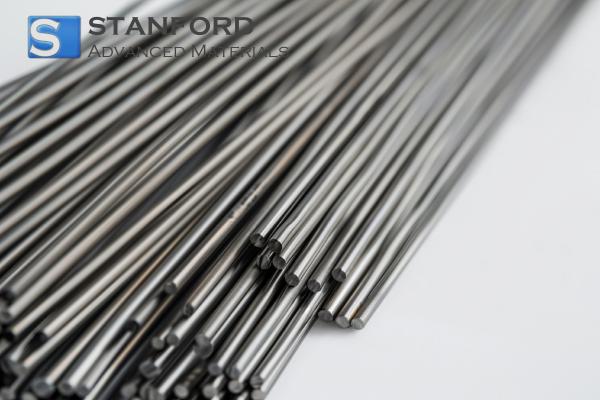SECTION 1. IDENTIFICATION
Product Name: Ammonium Nickel(II) Sulfate Hexahydrate
CAS #: 7785-20-8
Relevant identified uses of the substance: Scientific research and development
Supplier details:
Stanford Advanced Materials
E-mail: sales@samaterials.com
Tel: (949) 407-8904
Address: 23661 Birtcher Dr., Lake Forest, CA 92630 U.S.A.
SECTION 2. HAZARDS IDENTIFICATION
Classification of the substance or mixture
GHS Classification in accordance with 29 CFR 1910 (OSHA HCS)
Acute toxicity, Oral(Category 4), H302
Acute toxicity, Inhalation(Category 4), H332
Respiratory sensitisation(Category 1), H334
Skin sensitisation(Category 1), H317
Germ cell mutagenicity(Category 2), H341
Carcinogenicity(Category 1A), H350
Reproductive toxicity(Category 1B), H360
Specific target organ toxicity -repeated exposure(Category 1), H372
Acute aquatic toxicity(Category 1), H400
Chronic aquatic toxicity(Category 1), H410
GHS Label elements, including precautionary statements
Pictogram
Signal word
DangerHazard statement(s)
H302 + H332
Harmful if swallowed or if inhaled
H317
May cause an allergic skin reaction.
H334
May cause allergy or asthma symptoms or breathing difficulties if inhaled.
H341
Suspected of causing genetic defects.
H350
May cause cancer.
H360
May damage fertility or the unborn child.
H372
Causes damage to organs through prolonged or repeated exposure.
H410
Very toxic to aquatic life with long lasting effects.
Precautionary statement(s)
P201
Obtain special instructions before use.
P202
Do not handle until all safety precautions have been read and understood.
P260
Do not breathe dust/ fume/ gas/ mist/ Vapors/ spray.
P264
Wash skin thoroughly after handling.
P270
Do not eat, drink or smoke when using this product.
P271
Use only outdoors or in a well-ventilated area.
P272
Contaminated work clothing should not be allowed out of the workplace.
P273
Avoid release to the environment.
P280
Wear protective gloves/ protective clothing/ eye protection/ face protection.
P285
In case of inadequate ventilation wear respiratory protection.
P301 + P312 + P330
IF SWALLOWED: Call a POISON CENTER or doctor/ physician if you feel unwell. Rinse mouth.
P302 + P352
IF ON SKIN: Wash with plenty of soap and water.
P304 + P340 + P312
IF INHALED: Remove person to fresh air and keep comfortable for breathing. Call a POISON
CENTER or doctor/ physician if you feel unwell.
P308 + P313
IF exposed or concerned: Get medical advice/ attention.
P333 + P313
If skin irritation or rash occurs: Get medical advice/ attention.
P363
Wash contaminated clothing before reuse.
P391
Collect spillage.
P405
Store locked up.P501
Dispose of contents/ container to an approved waste disposal plant.
Hazards not otherwise classified (HNOC) or not covered by GHS-none
SECTION 3. COMPOSITION/INFORMATION ON INGREDIENTS
Substances
Synonyms:Nickel ammonium sulfate
Formula: H8N2NiO8S26H2O
Molecular weight: 394.99 g/mol
CAS-No.: 7785-20-8
EC-No.: 239-793-5
Index-No.: 028-017-00-9
SECTION 4. FIRST AID MEASURES
Description of first aid measures
General advice
Consult a physician. Show this safety data sheet to the doctor in attendance.
Move out of dangerous area.
If inhaled
If breathed in, move person into fresh air. If not breathing, give artificial respiration. Consult a
physician.
In case of skin contact
Wash off with soap and plenty of water. Take victim immediately to hospital. Consult a physician.
In case of eye contact
Flush eyes with water as a precaution.
If swallowed
Never give anything by mouth to an unconscious person. Rinse mouth with water. Consult a physician.
Most important symptoms and effects, both acute and delayed
The most important known symptoms and effects are described in the labelling (see section 2) and/or
in section 11
Indication of any immediate medical attention and special treatment needed
No data available
SECTION 5. FIREFIGHTING MEASURES
Extinguishing media
Suitable extinguishing media
Use water spray, alcohol-resistant foam, dry chemical or carbon dioxide.
Special hazards arising from the substance or mixture
Nitrogen oxides (NOx), Sulphur oxides, Nickel/nickel oxides
Advice for firefighters
Wear self-contained breathing apparatus for firefighting if necessary.
Further information
No data available
SECTION 6. ACCIDENTAL RELEASE MEASURES
Personal precautions, protective equipment and emergency procedures
Use personal protective equipment. Avoid dust formation. Avoid breathing Vapors, mist or gas. Ensure
adequate ventilation. Evacuate personnel to safe areas. Avoid breathing dust.
For personal protection see section 8.
Environmental precautions
Prevent further leakage or spillage if safe to do so. Do not let product enter drains. Discharge into the
environment must be avoided.
Methods and materials for containment and cleaning up
Pick up and arrange disposal without creating dust. Sweep up and shovel. Keep in suitable, closed
containers for disposal.
Reference to other sections
For disposal see section 13.
SECTION 7. HANDLING AND STORAGE
Precautions for safe handling
Avoid contact with skin and eyes. Avoid formation of dust and aerosols.
Provide appropriate exhaust ventilation at places where dust is formed.
For precautions see section 2.
Conditions for safe storage, including any incompatibilities
Keep container tightly closed in a dry and well-ventilated place.
Specific end use(s)
Apart from the uses mentioned in section 1 no other specific uses are stipulated
SECTION 8. EXPOSURE CONTROLS/PERSONAL PROTECTION
Exposure controls
Appropriate engineering controls
Handle in accordance with good industrial hygiene and safety practice. Wash hands before breaks
and at the end of workday.
Personal protective equipment
Eye/face protection
Face shield and safety glasses Use equipment for eye protection tested and approved under
appropriate government standards such as NIOSH (US) or EN 166(EU).
Skin protection
Handle with gloves. Gloves must be inspected prior to use. Use proper glove removal
technique (without touching glove's outer surface) to avoid skin contact with this product. Dispose of
contaminated gloves after use in accordance with applicable laws and good laboratory practices.
Wash and dry hands.
Body Protection
Complete suit protecting against chemicals, The type of protective equipment must be selected
according to the concentration and amount of the dangerous substance at the specific workplace.
Respiratory protection
Where risk assessment shows air-purifying respirators are appropriate use a full-face particle
respirator type N100 (US) or type P3 (EN 143) respirator cartridges as a backup to engineering
controls. If the respirator is the sole means of protection, use a full-face supplied air respirator. Use
respirators and components tested and approved under appropriate government standards such as
NIOSH (US) or CEN (EU).
Control of environmental exposure
Prevent further leakage or spillage if safe to do so. Do not let product enter drains. Discharge into theenvironment must be avoided.
SECTION 9. PHYSICAL AND CHEMICAL PROPERTIES
Information on basic physical and chemical properties
Appearance
Form: Crystals with lumps
Color: green
Odor
No data available
Odor Threshold
No data available
pH
No data available
Melting point/freezing point
Melting point/range: 85 -89 °C (185 -192 °F)-lit.
Initial boiling point and boiling range
No data available
Flash point
N/A
Evaporation rate
No data available
Flammability (solid, gas)
No data available
Upper/lower flammability or explosive limits
No data available
Vapor pressure
No data available
Vapor density
No data available
Relative density
No data available
Water solubility
No data available
Partition coefficient: n-octanol/water
No data available
Auto-ignition temperature
No data available
Decomposition temperature
No data available
Viscosity
No data available
Explosive properties
No data available
Oxidizing properties
No data available
Other safety information
No data available
SECTION 10. STABILITY AND REACTIVITYReactivity
No data available
Chemical stability
Stable under recommended storage conditions.
Possibility of hazardous reactions
No data available
Conditions to avoid
No data available
Incompatible materials
Strong oxidizing agents
Hazardous decomposition products
Other decomposition products-No data available
In the event of fire: see section 5
SECTION 11. TOXICOLOGICAL INFORMATION
Information on toxicological effects
Acute toxicity
LD50 Oral-Rat-399 mg/kg
Remarks:
Behavioral:Somnolence (general depressed activity). Gastrointestinal:Changes in structure or function
of salivary glands. Diarrhoea
Inhalation: No data available
Dermal: No data available
No data available
Skin corrosion/irritation
No data available
Serious eye damage/eye irritation
No data available
Respiratory or skin sensitisation
Germ cell mutagenicity
In vitro tests showed mutagenic effects
Carcinogenicity
Human carcinogen.
IARC:
1-Group 1: Carcinogenic to humans(Diammonium nickel bis(sulphate) hexahydrate)
ACGIH:
No component of this product present at levels greater than or equal to 0.1% is identified as a
carcinogen or potential carcinogen by ACGIH.
NTP:
Known to be human carcinogen(Diammonium nickel bis(sulphate) hexahydrate)
OSHA:
No component of this product present at levels greater than or equal to 0.1% is identified as a
carcinogen or potential carcinogen by OSHA.
Reproductive toxicity
No data available
Presumed human reproductive toxicant
Specific target organ toxicity -single exposure
No data available
Specific target organ toxicity -repeated exposure
Causes damage to organs through prolonged or repeated exposure.
Aspiration hazard
No data availableAdditional Information
RTECS: WS6061000
To the best of our knowledge, the chemical, physical, and toxicological properties have not been
thoroughly investigated.
Stomach-Irregularities-Based on Human Evidence
Stomach-Irregularities-Based on Human Evidence
SECTION 12. ECOLOGICAL INFORMATION
Toxicity
No data available
Persistence and degradability
No data available
Bioaccumulative potential
No data available
Mobility in soil
No data available
Results of PBT and vPvB assessment
PBT/vPvB assessment not available as chemical safety assessment not required/not conducted
Other adverse effects
An environmental hazard cannot be excluded in the event of unprofessional handling or disposal.
Very toxic to aquatic life with long lasting effects.
SECTION 13. DISPOSAL CONSIDERATIONS
Waste treatment methods
Product
Offer surplus and non-recyclable solutions to a licensed disposal company.
Contact a licensed professional waste disposal service to dispose of this material.
Dissolve or mix the material with a combustible solvent and burn in a chemical incinerator equipped
with an afterburner and scrubber.
Contaminated packaging
Dispose of as unused product.
SECTION 14. TRANSPORT INFORMATION
DOT (US)
UN number: 3077
Class: 9
Packing group: III
Proper shipping name:
Environmentally hazardous substances, solid, n.o.s.(Diammonium nickel bis(sulphate)
hexahydrate)
Reportable Quantity
(RQ): 100 lbs
Poison Inhalation Hazard: No
IMDG
Not dangerous goods
IATANot dangerous goods
SECTION 15. REGULATORY INFORMATION
SARA 302 Components
No chemicals in this material are subject to the reporting requirements of SARA Title III, Section 302.
SARA 313 Components
The following components are subject to reporting levels established by SARA Title III, Section 313:
Diammonium nickel bis(sulphate) hexahydrate
CAS-No.
7785-20-8
Revision Date
1993-04-24
SARA 311/312 Hazards
Acute Health Hazard, Chronic Health Hazard
Massachusetts Right To Know Components
Diammonium nickel bis(sulphate) hexahydrate
CAS-No.
7785-20-8
Revision Date
1993-04-24
Pennsylvania Right To Know Components
Diammonium nickel bis(sulphate) hexahydrate
CAS-No.
7785-20-8
Revision Date
1993-04-24
New Jersey Right To Know Components
Diammonium nickel bis(sulphate) hexahydrate
CAS-No.
7785-20-8
Revision Date
1993-04-24
California Prop. 65 Components
WARNING! This product contains a chemical known to the State of California to cause cancer.
Diammonium nickel bis(sulphate) hexahydrate
CAS-No.
7785-20-8
Revision Date
2007-09-28
SECTION 16. OTHER INFORMATION
Safety Data Sheet according to Regulation (EC) No. 1907/2006 (REACH). The above information is
believed to be correct but does not purport to be all inclusive and shall be used only as a guide. The
information in this document is based on the present state of our knowledge and is applicable to the
product with regard to appropriate safety precautions. It does not represent any guarantee of the
properties of the product.


 English
English Española
Española Deutsch
Deutsch Français
Français Italiano
Italiano Sulfate Hexahydrate.png)
